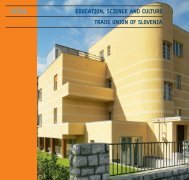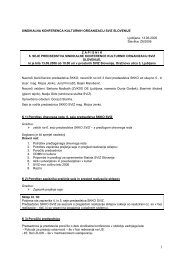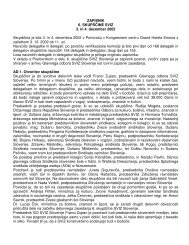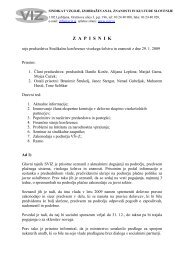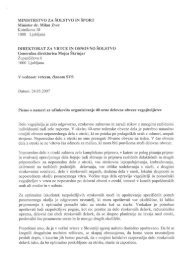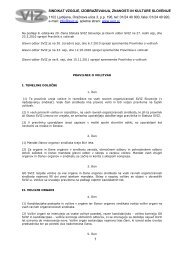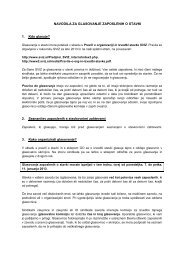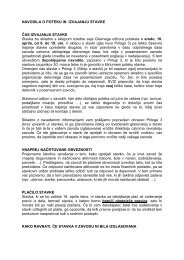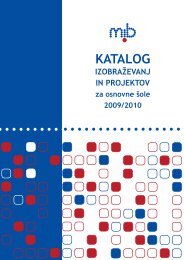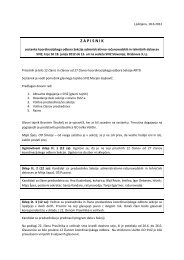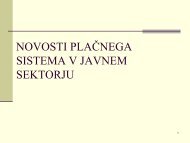You also want an ePaper? Increase the reach of your titles
YUMPU automatically turns print PDFs into web optimized ePapers that Google loves.
In his concertos, Mozart in a way reworked everything that he had learned<br />
from Italian and French music for the violin, as well as from Czech violin music.<br />
Each of the violin concertos has its own individual features, but from one concerto<br />
to the next we can trace a clear formal-technical and musical-content<br />
development. From the initial models of Vivaldi only the three-movement<br />
form remains by the time of the last three concertos, in which influences of<br />
the aria and sonata form are already evident.<br />
Along with the Fifth Violin Concerto it was Violin Concerto No. 4 that met with<br />
the best response; both works are technically demanding for the performer,<br />
but at the same time very rewarding. The first movement of Violin Concerto<br />
No. 4 is thematically rich and clearly structured. The Andante Cantabile<br />
is full of lyrical emotion and inspiration. The concerto’s concluding rondo<br />
has a folk character following the French model, as the title suggests, and<br />
is distinguished by elegant themes and dance episodes. In the concerto we<br />
also find resonances of Luigi Boccherini’s Violin Concerto from 1768, which<br />
was also written in the key of D Major, as well as having a similar structural<br />
plan and even being akin to Mozart’s concerto in terms of thematic material.<br />
However, Mozart breathed a graciousness and brilliance into his work such<br />
as was unknown to his predecessor.<br />
After the death of England’s Queen Anne in 1740, George Frederic Handel<br />
was left without a patron and England without a sovereign. As there was<br />
no direct heir to the throne, the Saxon Duke George, Prince-elector of Hanover,<br />
a former employer of Handel, became King George I. On his arrival<br />
from Germany the new King avoided public appearances because he did<br />
not want to speak English, and was thus soon regarded by his subjects as<br />
somewhat limited. With typically English humour they labelled King George<br />
as “a kind-hearted man, who in the whole world only hates three people: his<br />
mother, his wife and his son”. Seeking to calm his subjects the King decided<br />
to organise a concert spectacle.<br />
The Prussian emissary in London, Friedrich Bonet, communicated the King’s<br />
wishes for “a concert on the river [The Thames] similar to a masque [a characteristic<br />
English musical genre combining poetry, vocal and instrumental<br />
music, and theatre and dance]”. On 17 July at 8 o’clock in the morning the King<br />
boarded his barge accompanied by some noblemen; his vessel was followed<br />
by another barge carrying 50 instrumentalists. As the emissary continues,<br />
the music was “composed especially for the occasion by the famous Handel,<br />
born in Halle, the most important court composer of His Royal Highness. The<br />
music so pleased His Highness that he ordered the entire work to be repeated<br />
three times, irrespective of the fact that each performance lasted one hour”.<br />
The King’s barge was accompanied by countless boats full of people who had<br />
come to listen to the unusual concert, and the King himself dined on the river<br />
with this enormous entourage. The Prince and the King’s wife, however, did<br />
not attend the festivities.<br />
The Water Music (published by Walsh in 1734 with the title The Celebrated<br />
Water Music) is a collection of 20 movements that were performed on vari-<br />
PROGRAM / PROGRAM<br />
137



